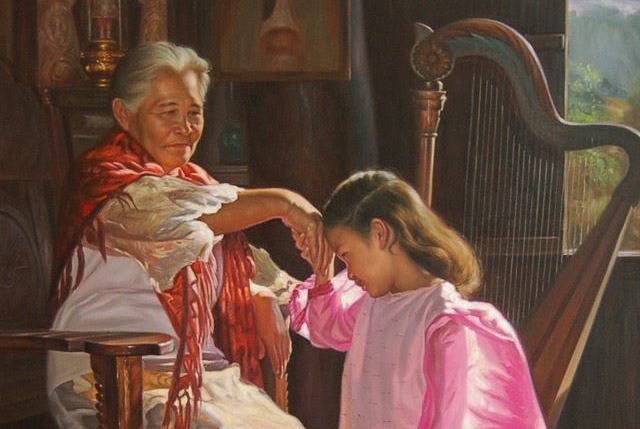THE PHILIPPINES
is one of the world's largest archipelago nations. It comprises various 3 major lands which are Luzon, Visayas and Mindanao. Those 3 different lands are also separated into several places.Those 3 different lands are also divided into several places. Each place has its own unique sets of beliefs and practices. But despite these differences, Filipinos still have similarities which are the values and culture that binds us together.
Here are some of the traditions that are still practiced in some region of the Philippines:
 |
BINUKOTIt is also known as Binokot, the name literally means "wrapped up" or "veiled" in Visayan languages. A pre-colonial Visayan practice from the Philippines that secludes young women in the hope that isolation keeps them “pure” and valued more highly by future matrimonial suitor, where:
They couldn’t be exposed to sunlight because it would make them darker. They couldn’t step on the ground because it’s not “pure”. They shouldn’t be seen by men other than their family members. They practice chanting or retelling the "Hinilawod," a 29,000-verse epic that takes nearly three days to chant in its original form, making it one of the world's longest epics, along with Tibet's Epic of King Gesar.
Their families arranged their marriages, and they were usually married off to other noble/royal men who were obligated to offer a high “pangayu” or dowry to the family, commonly known as "Dote." Here are some women who used to be Binukotans:
 | TINIKLINGTinikling is a folk dance from the Philippines that originates back to the Spanish colonial era. It is performed by one or more dancers who step over and in between bamboo poles while at least two people beat, tap, and slide the poles against the ground and each other. It is customarily danced to rondalla music, which is a kind of medieval Spanish serenade performed by a group of stringed instruments. This dance uses jumping, twisting, and hopping as locomotor movements. The term "tinikling" refers to the birds that are known locally as "tikling," which can be any number of rail species, but more precisely to the barred rail (Gallirallus torquatus). The literal translation of the term "tinikling" is "to perform it tickling-like."
|
 | TRADITIONAL TRIBE TATTOOS or BATOKBatok, batek, patik, or batik, among other names, are wide synonyms for indigenous tattoos of the Philippines. It is a traditional tattooing technique used by the Filipino people, in which the artist manually taps ink onto the skin with wooden or bone tools. In a number of tribes, batok was thought to survive death and gaining passage to the afterlife for both genders. Some designs served as protection marks against evil spirits or vengeful ancestors, or they conveyed wisdom from the gods or deceased ancestors. In particular, Apo whang Od continues to tattoo in this manner nowadays. She is Whang-od Oggay, also known as Maria Oggay, 106 years old tattoo artist from the village of Buscalan within Tinglayan, Kalinga, Philippines. She is often described as the "last" and oldest mambabatok and is part of the Butbut people of the larger Kalinga ethnic group. At 15, she began tattooing Butbut headhunters and women. She was the only mambabatok in the region for many years, and she traveled to nearby towns to tap intricate designs resembling snakeskin down the arms and across the chests of warriors who hunted heads in order to honor valor in battle, a victory, or a death. She provided unmarried women with tattoos that boosted their attractiveness and guaranteed conception
|
 | PAGMAMANOFilipinos greet one another in a unique manner. It's known as “pagmamano" and is usually offered as a greeting when one first meets an elder or when one visits their home.
The phrase "mano po," which combines the Spanish word for "hand" with the Tagalog word "po," which is used to end sentences graciously, should be used at the beginning of your statement to demonstrate this respect.
"Mano po" means "may I have your hand?" in Spanish.” and “may I obtain your blessing?When you respond, elders will reach out and say, "Kaawaan ka ng Diyos," which means, literally, "May the Almighty have mercy on you."
|
 | BAYANIHANBayanihan refers to helping one’s fellow men or "kababayan" that is in need, this can be shown in numerous ways. One of the earliest forms of showcasing bayanihan is the moving of a house with the cooperation of numerous people. It occurs when each individual who offered to help lifts and carries a "bahay kubo" on their shoulders.
Bamboo poles that have been linked length and across-wise are placed underneath the home so that the volunteers may carry it. A house will need to be carried by roughly 15 to 20 people, and then everyone will move together to the family’s new location. At the conclusion of the transfer, the family extends their gratitude to the volunteers by providing dinner.
|
|
|




Comments
Post a Comment